-

-
Logic and symbols
10 - 13 octobre 2022Liste des participantsOrganisateur
Ghislaine Dehaene Lambertz, Directeur de recherche CNRS, Laboratoire de Neuroimagerie, Neurospin, Université Paris
Saclay, France Vidéo 1 Vidéo 2Speakers
Lucia MELLONI, Max Planck for Empirical Aesthetics, Germany
Lucas BENJAMIN, UNICOG Neurospin Vidéo
Martin GIURFA, Research Centre on Animal Cognition, Center for Integrative Biology, CNRS, University of
Toulouse, France Vidéo
Giorgio VALLORTIGARA, Center for Mind/Brain Sciences, University of Trento, Rovereto, Italy Vidéo
Stanislas DEHAENE, Collège de France and INSERM-CEA Cognitive Neuroimaging Unit NeuroSpin Center, Saclay, France Vidéo
Mathias SABLE MEYER, PhD Candidate (ABD)
PSL/Collège de France & NeuroSpin, France Vidéo
Lorenzo CICCIONE, CEA-Neurospin
Collège de France Vidéo
Carole FRITZ, Directrice de Recherche CNRS – CREAP-E. Cartailhac, MSHS de Toulouse
Directrice scientifique de la Grotte Chauvet-Pont d’Arc
UMR 5608 TRACES Vidéo
Elisabeth SPELKE, Professor, Harvard University, USA
Gergely CSIBRA, Central European University, Vienna, Austria Vidéo
Laurent COHEN, Hôpital de la Salpêtrière, ICM, Paris, France Vidéo
Naama FRIEDMAN, Branco Weiss Chair for Research in Child Development and Education
Head of the Lieselotte Adler Lab for Research in Child Development
Head of MiLa: The Cukier-Goldstein-Goren Center for Mind, Cognition, and Language
Language and Brain Lab, School of Education and Sagol School of Neuroscience
Tel Aviv University, Israël
Christophe PALLIER, CNRS, INSERM U992 Vidéo
Andreas NIEDER, Institute of Neurobiology, Dept. of Biology, University of Tübingen, Germany Vidéo
Lucas BONATTI, ICREA and Universitat Pompeu Fabra Vidéo
Marie AMALRIC, Postdoctoral fellow
Laboratory for Developmental Studies
Harvard University, Department of Psychology. Vidéo
Marie SORESSI, Professeur à l’Université de Leiden, Pays-Bas
Solange RIGAUD, CNRS Researcher, PhD
Université de Bordeaux, FranceThèmeLogic and Symbols
Human adults commonly use symbolic systems (e.g. speech, numbers, writing code, algebraic formula) to represent aspects of the external world, and they easily and flexibly go from symbols to objects and vice-versa. This “symbolic mind” might be related to a distinct human neural architecture, in particular, the expansion of the associative areas and the development of new long-distance fiber tracts, such as the arcuate fasciculus. More efficient connections to and from the frontal lobe and a longer memory buffer may lead to the discovery of more abstract structures, and ultimately enable to represent the external world with a symbolic system. During the symposium, we will explore the differences between human adults and infants but also between modern and past humans and humans and animals in their capacity to use symbols and logical operations
Vidéo
-
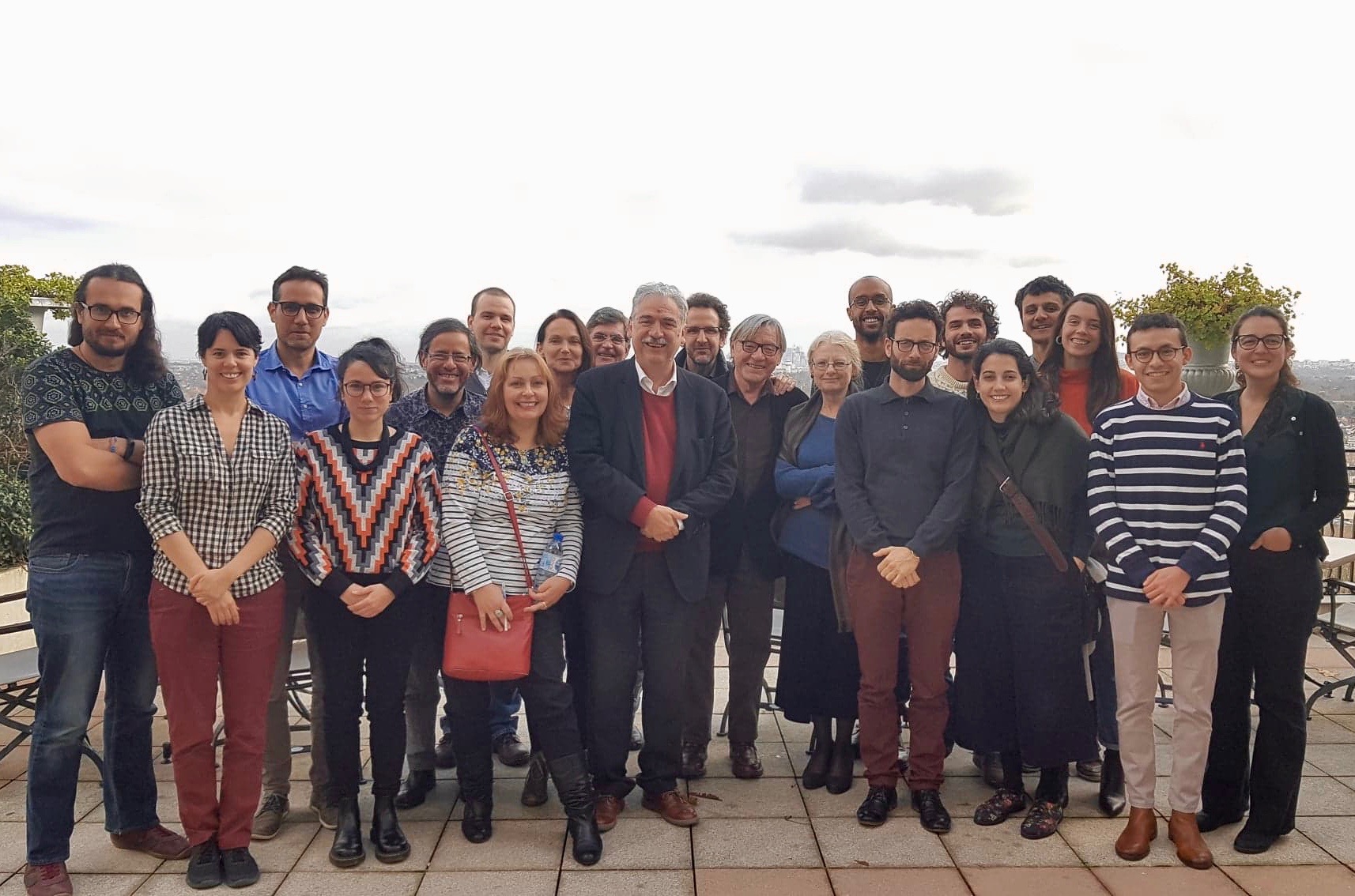
-
Enacting social memory: cognition, image-making and ritual action
6-8 Décembre 2019Liste des participantsOrganisateur
Carlo Severi, EHESS, Paris, FranceIntervenants
Jacopo Baron, EHESS, LAS, France
Jon Clindaniel, Harvard University, USA
Paul Codjia, EHESS / LAS – Collège de France
Margarita Cossich Vielman, Posgrado en Estudios Mesoamericanos, Universidad Nacional Autonoma de Mexico, Mexique
Ludovic Coupaye, University College London, Londres
Maurizio Esposito La Rossa, EHESS, Paris, France
Carlos Fausto, MN/UFRJ, Musée National, Rio de Janeiro, Brésil
William F. Hanks, University of California, Berkeley, USA
Sabine Hyland, University of St Andrews, UK
Antonio Jaramillo Arango, Universidad Nacional Autonoma de Mexico, Mexique
Susanne Küchler, UCL, UK
Els Lagrou, Université Fédérale, Rio de Janeiro, Brésil
Regina Lira, Instituto de Investigaciones Históricas- Universidad Nacional Autonoma de Mexico, Mexique
Maria Luísa Lucas, Musée National, Rio de Janeiro, Brésil
Manuel Medrano, University of St Andrews, UK
Ana Gabriela Morim De Lima, Post-doctorante à l’Université de São Paulo et au Paloc-MNHN, Brésil
Federico Navarrete, Universidad Nacional Autonoma de Mexico, Mexique
Pedro de Niemeyer Cesarino, Departamento de Antropologia, Universidade de São Paulo, Brésil
Ottavia Paternò, EHESS | LAS, France
Nian Pissolati Lopes, Musée National, Rio de Janeiro, Brésil
Gary Urton, Harvard University, USA
Graeme Were, University of Bristol, UKThèmeEnacting social memory: cognition, image-making and ritual action
Colloquium from Friday December 6th, 09:00, to Sunday 8th, 18:00.
Pavillon Henri IV, 78100 Saint Germain en Laye
Télécharger le programme
From Frederic Bartlett down to the present day, research in the field of Cognitive Psychology has linked the concept of memorization with that of narration. The salience of a narrative structure, with its sequence of actions, both for fixing a mnemonic trace and for evoking a memory,has been generally recognized in the field of cognitive studies. Jerome Bruner, for example, suggests that no memory can be imagined outside a narrative structure; according to him, any memory, even a visual one, is a narrative. However, anthropological research conducted in the last twenty years has shown several cases of transmission of knowledge where narration plays no part. Great advances have been made in the interpretation of the Andean khipus, a system of recording mathematical knowledge, which is entirely visualized by series of knotted cords. Elsewhere, it has been shown that numerous cultures exist in which, although the social memory seems to be based solely on spoken words, the role of images is part and parcel of the process of transmitting knowledge. Combinations of words and images that form memory techniques, particularly within the context of ritual discourse, constitute the “arts of memory” that, in many societies, have oriented the transmission of knowledge in so-called “oral” societies.
Finally, ritual action itself (and, in particular, the pragmatics of ritual enunciation of several kinds of utterances) has been shown to play a major role in many social practices related to the memorization of cultural knowledge.
Gathering fieldwork-research mainly conducted on Native American and Oceanian cultures, this meeting will focus on future developments of anthropological research, devoted to these three major aspects of social memory and cognition.
-
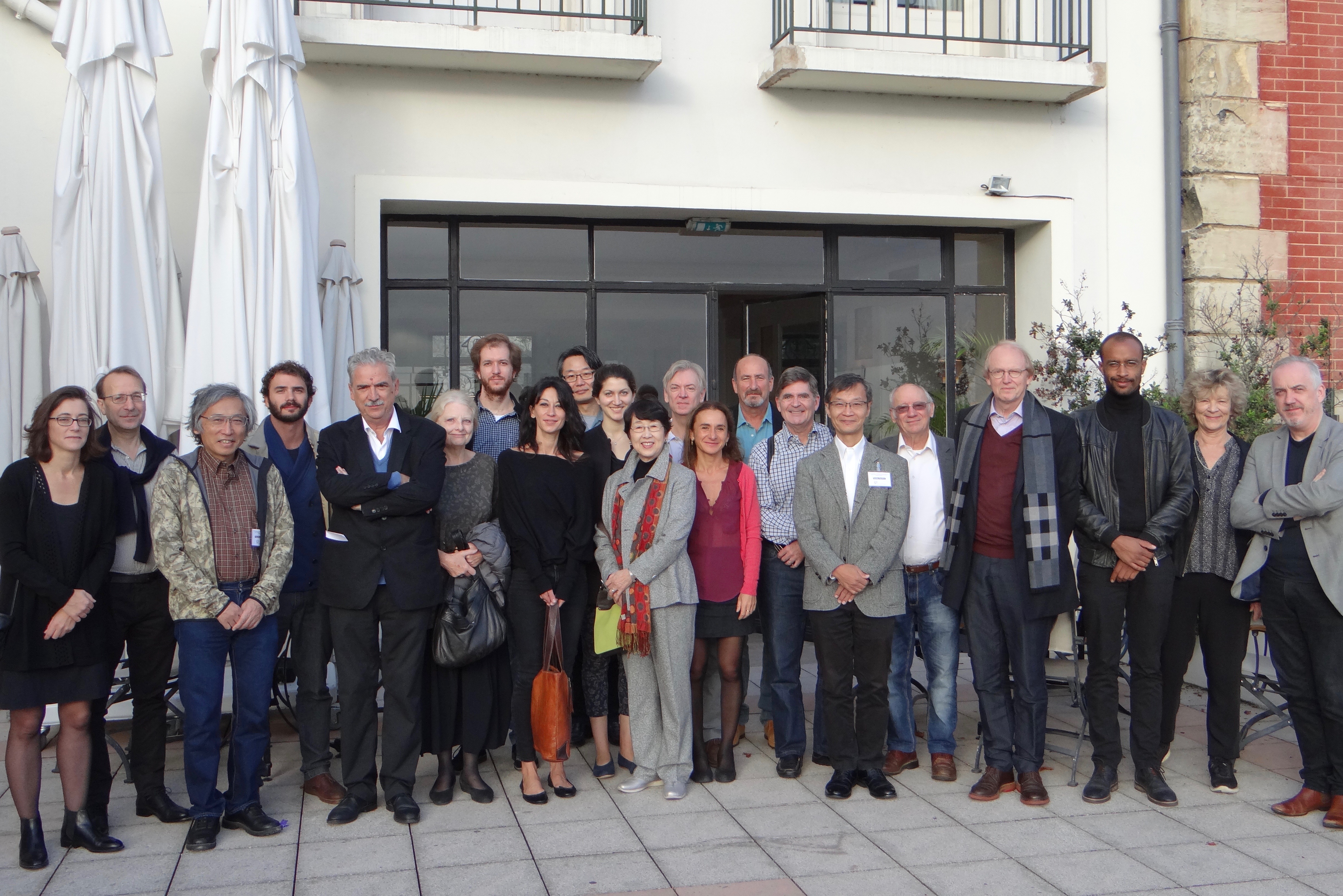
-
Translation, Multimodal Interaction and Context. Cross-disciplinary Perspectives
11-14 Octobre 2017Liste des participantsOrganisateurs
William F. HANKS, University of California, Berkeley, USA
Valentina VAPNARSKY, CNRS, Laboratoire d’ethnologie et de sociologie comparative, FranceIntervenants
Gabriella AIRENTI, Université de Turin, Italia
Jacopo BARON, EHESS, France
Paul CODJIA, EHESS, France
Jean-Pierre DESCLES, Sorbonne University, France
Michel DE FORNEL / Maud VERDIER, EHESS, France / Université Paul Valéry, Montpellier, France
Benjamin DWYER, Middlesex University, School of Media and Performing Arts, UK
Terra EDWARDS, Saint Louis University, USA
Philippe ERIKSON,Université Paris Nanterre, Laboratoire d’ethnologie et de sociologie comparative, France
Neil GOODMAN, Indiana University Northwest, USA
Jennifer GREEN, University of Melbourne, Australia
Sachiko IDE, Japan Women’s University, Japan
Yasuhiro KATAGIRI, Future University Hakodate, Japan
Masha KHACHATURYAN, University of Helsinki, Finland
Sotaro KITA, University of Warwick, UK
Cyril MENTA, EHESS, France
Norihiro SADATO, National University Sokendai, the Graduate University for Advanced Studies, National Institute for Physiological Sciences, Japan
Carlo SEVERI, CNRS, EHESS, LAS (Collège de France), France
Sara SHROUKH, EHESS, France
Jef VERSCHUEREN, University of Antwerp, BelgiumObservateur
Aurore MONOD BECQUELINThèmeBlurb of Colloque Fyssen: Translation, interaction and Context
October 11-14, 2017
Pavillon Henri IV, Saint Germaine-en-Laye, France
Programme
AbstractsThis international colloque brings together researchers from a range of disciplines and approaches, broadly focused on the analysis of human interaction in its social, cultural and cognitive contexts. Recent advances in several fields converge on elements, levels and dynamics of social interaction, and provide the opportunity for new ways of modelling human expression and communication, in the context of cross-cultural variability (implying comparison, translation and possibly typology) and intra-cultural social embedding (implying ethnology, fieldwork, theories of context).
We now have a several decades of research on speech-gesture relations, and an emerging field of « multimodal interaction » that is transforming how we think of utterances. Binding and integration of information from multiple modalities over time become critical problems, calling for a plurality of approaches, including linguistic, semiotic, psychological, computational, neuroscientific and other methods. The study of signed languages is surging forward and raising questions about conventionality, social distribution, functional capacity in visual and tactile modalities. At the same time anthropologists have delved deeply into endogenous understandings of images, material objects, the body, performance (ritual and ordinary) and the social construction of perception and communication — all of which echoes multimodality, but in a different disciplinary language. The human capacity to make and appreciate art poses some convergent questions regarding medium, the interaction between audience, artist and work of art. Indeed verbal, visual, musical, sculptural and body arts are among the classic objects of linguistic and anthropological description.
Comparison, and arguably even understanding itself, relies on translation, whether across modalities, across cultures, across languages, or within a single linguaculture (eg paraphrase, reported speech, mimicry, mockery or other portrayal of gesture, posture, etc). In neuroscience and psychology, recent research has opened up a horizon of questions about how the brain and mind engage interaction and synthesize information. The questions of cultural variability, social embedding and translation are equally relevant here, although they have been developed in disciplines far removed from brain science. How can we best move knowledge across disciplines, so as to catalyze more incisive conceptualization and method?
Consistent with the scope of these questions, the participants in the colloque come from multiple disciplines, including anthropology, linguistics, psychology, neuroscience, computer science, music, and sculpture. These disciplines stand for different ways of constituting facts, crafting analysis and evaluating results. Cross-cutting these divisions, the participants come from a half dozen different countries in Europe, North America, Australia and Japan. The special interest of this diversity is that the approaches developed in different research traditions themselves differ in productive ways. We need to leverage this diversity for a pluridisiplinary and international approach commensurate to the challenges we face.
The challenge and aim of the colloque is therefor that we come together, begin to develop a language in which to collaborate, and initiate a community of debate at the intersection of translation, multi-dimensional analysis of human interaction, and the social embedding commonly called « context. »
-
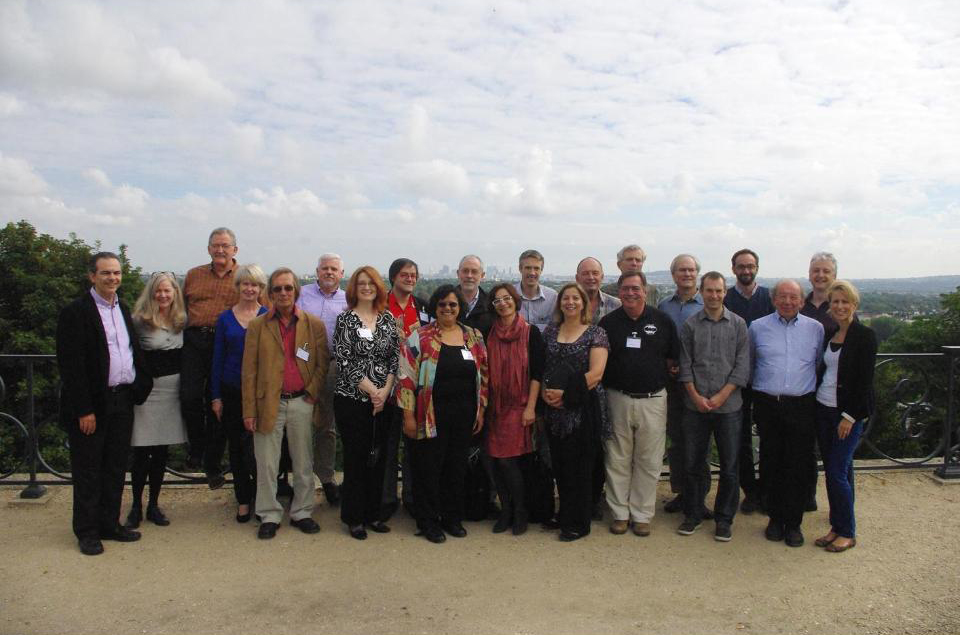
-
From Colonisation to Globalisation: Species Movements in Human History
4-7 Octobre 2013Liste des participantsOrganisateurs
Pr. Michael Petraglia, University of Oxford, UK
Dr. Nicole Boivin,University of Oxford, UK
Dr. Rémy Crassard, CNRS Lyon, FranceIntervenants
Pr. Mark ACHTMAN, University of Warwick, UK
Pr. Patrizia D’ETTORRE,Université Paris 13, France
Dr. Timothy DENHAM, The Australian National University, Australia
Pr. Robin DENNELL, University of Sheffield, UK
Dr. Nick DRAKE, King’s College, London, UK
Pr. Jon ERLANDSON, University of Oregon, USA
Pr. Clive FINLAYSON, Gibraltar Museum, Gibraltar
Dr. Dorian FULLER, University College, London, UK
Dr. Monica GREEN, Arizona State University, USA
Pr. Marcus HALL, University of Zurich, Switzerland
Pr. Terry HUNT, University of Oregon, USA
Dr. Greger LARSON, University of Durham, UK
Dr. Margaret LEWIS, The Richard Stockton College of New Jersey, USA
Dr. Bruce SMITH, Smithsonian Institution, USA
Dr. Andrew TATEM, University of Southampton, UK
Pr. James L.A. WEBB, Colby College, USA
Dr. Melinda ZEDER, Smithsonian Institution, USAObservateurs
Pr. Philippe DESCOLA
Dr. Géraldine FINLAYSONThèmeHuman Dispersal and Species Movement
From Prehistory to the Present
Edited by Nicole Boivin, Rémy Crassard and Michael PetragliaDu 4 au 7 octobre 2013, la Fondation Fyssen a renoué avec sa longue tradition d’organisatrice de rencontres scientifiques internationales à Saint-Germain-en-Laye. Le colloque intitulé « FROM COLONISATION TO GLOBALISATION : SPECIES MOVEMENTS IN HUMAN HISTORY (De la colonisation à la globalisation : les déplacements de espèces au cours de l’histoire de l’humanité) » a pris cette fois la forme d’une table-ronde au public restreint. Organisée par Michael Petraglia (University of Oxford),Nicole Boivin (University of Oxford) et Rémy Crassard (CNRS-Archéorient), cette table-ronde (voir programme) a permis la rencontre d’une vingtaine de chercheurs des quatre coins du monde, issus de domaines de recherche très variés : archéologues, archéozoologues, archéobotanistes, généticiens, géographes, microbiologistes, infectiologues, historiens, éthologues et anthropologues ont ainsi débattus du rôle que les humains ont pu jouer dans les déplacements des espèces à travers la planète depuis le Pléistocène. Des discussions, souvent animées, et forcément très enrichissantes compte-tenu des spécialités très diverses de chacun, ont porté sur les mouvements assistés par les humains des plantes et des animaux domestiqués, des agents pathogènes et des maladies, des espèces invasives et commensales, et ont tenté de définir les implications de ces déplacements dans le cadre de la création d’écologies et de paysages anthropisés. Plusieurs publications vont découler de cette rencontre, la première du genre, à commencer par l’édition d’un ouvrage chez Cambridge University Press en 2014. Lire la suite
-
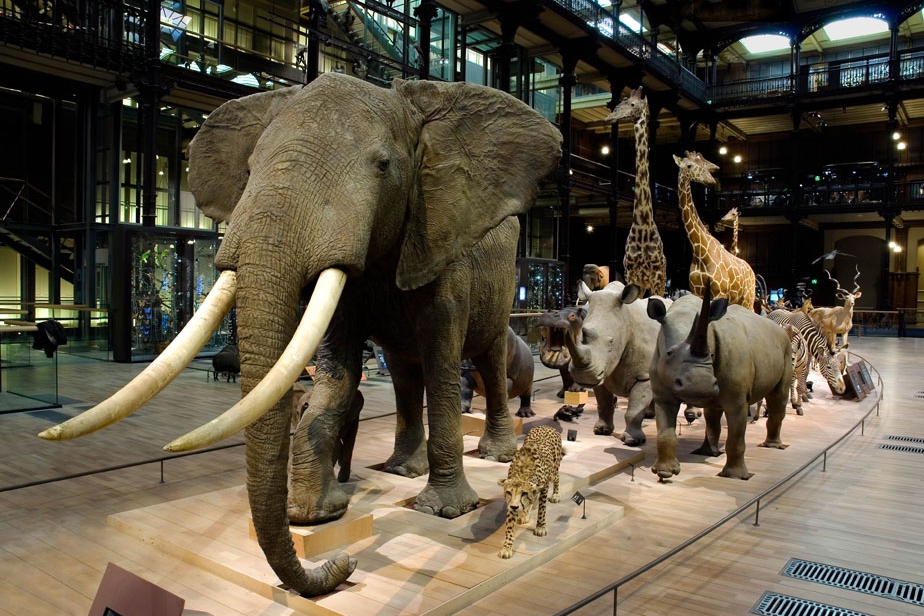
-
Fyssen Foundation – 30 years anniversary
16 Mai 2009Liste des participantsWelcome by Philippe DESCOLA
Introduction by Jacques PERRIAULT and Jean-Pierre CHANGEUX
Human Evolution
Harvey WHITEHOUSE : Whence and whither social anthropology ?
Chairman : Maurice GODELIER
Luigi L. CAVALLI-SFORZA : The relative importance of cultural and biological factors in human evolution
Chairman : Sander VAN DER LEEUW
Robert FOLEY : Human evolutionary prehistory : towards an integrated approach
Chairman : Jean CHAVAILLON
Ethology
Pierre JAISSON : Is there still something to learn from the behaviour of ants for general biologgy ?
Marc HAUSER : Evolving a mind for reciprocity and spite
Chairwoman : Elisabetta VISALBERGHI
Molecular Biology
Brigitte KIEFFER : The opioid receptor : from a concept to a visible molecule in the brain
Jacques MALLET : Maternal serotonin is crucial for murine embryonic development
Chairman : Henri KORN
Neurosciences
Wolf SINGER : The brain, a complex self-organizing system
Tim SHALLICE : The uneven development of cognitive neuroscience
Chairman : Michel IMBERT
Cognitive Sciences
David PREMACK : A new theory of human intelligence
Stanislas DEHAENE : The neural code for numbers
Chairman : Joseph LEDOUX
Final discussion : Philippe DESCOLAThème
-
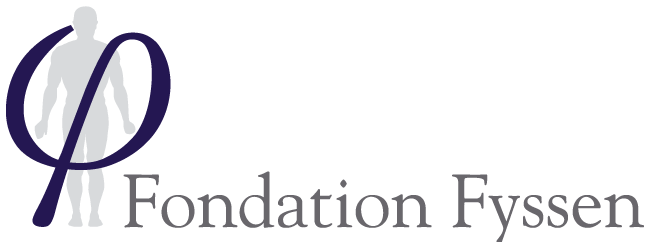
-
From objects to categories: Visual categorization in big brains, small brains and machines
3-6 Octobre 2008Liste des participantsF. Gregory ASHBY, Laboratory for Computantional Cognitive Neuroscience, UCSB, USA
Irving BIEDERMAN and Kenneth J. HAYWORTH, University of Southern California, USA
Heinrich H. BULTHOFF, Max Planck Institute for Biological Cybernetics, Germany
Robert G. COOK, Tufts University, USA
Michèle FABRE-THORPE, Centre de Recherche Cerveau et Cognition, CNRS – Université Paul Sabatier, France
Isabel GAUTHIER and Alan C-N. WONG, Vanderbilt University, Department of Psychology, USA
Martin GIURFA, Centre de Recherches sur la Cognition Animale, CNRS, Université Paul Sabatier, France
Stephen E.G. LEA, School of Psychology, University of Exeter, UK
Nikos K. LOGOTHETIS, max Planck Institute for Biological Cybernetics, Germany
Pietro PERONA, California Institute of Technology, Pasadena, USA
Tomaso POGGIO, Massachusetts Institute of Technology, USA
Philippe SCHYNS, Department of Psychology, University of Glasgow, UK
David R. SHANKS, University College London, UK
Mark K. JOHANSEN, Cardiff University, UK
Vladimir SLOUTSKY, Department of Psychology and Center fo Cognitive Science, The Ohio State University, USA
Keiki TANAKA, Cognitive Brain Mapping Laboratory, Riken Brain Science Institute, Japan
Simon THORPE, Centre de Recherche Cerveau et Cognition, CNRS- Université Paul Sabatier, France
Antonio TORRALBA, Computer Science and Artificial Intelligence Laboratory, Massachusette Institute of Technology, USA
Shimon ULLMAN, Department of Computer Science and Applied Mathematics, The Weizmann Institute of Science, IsraelThème
-
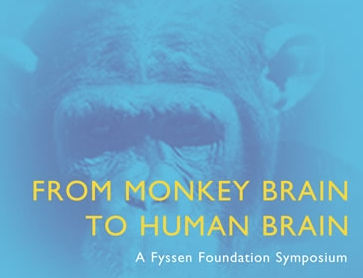
-
From Monkey brain to Human brain
20-23 Juin 2003Liste des participantsSuliann BEN AHMED, Institut des Sciences Cognitives, France
Céline AMIEZ, U371 INSERM, France
Nick BARRACLOUGH, School of Psychology, University of St. Andrews, UK
Elisabeth M. BRANNON, Center for Cognitive Neuroscience, Duke University, USA
Giovanni BUCCINO, Department of Neuroscience, School of Medicine, University of Parma, Italy
Jean-Pierre CHANGEUX, Collège de France and Pasteur Institute, France
Stanislas DEHAENE, Service Hospitalier Frédéric Joliot, France
Jean-René DUHAMEL, Institut des Sciences Cognitives, France
Juan-Carlos GOMEZ, School of Psychology, University of St. Andrews, UK
Marc D. HAUSER, Department of Psychology, Harvard University, USA
Jean-Jacques HUBLIN, Department of Anthropology, University of Bordeaux, France
Atsushi IRIKI, Department of Maxillofacial Biology, Tokyo Medical and Dental University, Japan
Tjeerd JELLEMA, Department of Experimental Psychology, Helmholtz Research Institute, Utrecht University, The Netherlands
Jean-Paul JOSEPH, U371 INSERM, France
Nancy KANWISHER, Department of Brain and Cognitive Sciences, Massachussets Institute of Technology, USA
Zoe KOURTZI, Max Planck Institute for Biological Cybernetics, Tübingen, Germany
Erica N. LORINCZ, School of Psychology, University of St. Andrews, UK
Nikos K. LOGOTHETIS, Max Planck Institute for Biological Cybernetics, Tübingen, Germany
Giuseppe LUPPINO, School of Medicine, University of Parma, Italy
EARL K. MILLER, The Picower Center for Learning and Memory and Department of Brain and Cognitive Sciences, Massachussets Institute of Technology, USA
Elinor McKONE, School of Psychology, Australian National University, Australia
Andreas NIEDER, Primate NeuroCognition Laboratory, University of Tübingen, Germany
David I. PERRET, School of Psychology, University of St. Andrews, UK
Michael PETRIDES, Department of Neurology and Neurosurgery, Montreal Neurological Institute, McGill University, Canada
Emmanuel PROCYK, U371 INSERM, France
Giacomo RIZZOLATTI, Department of Neuroscience, School of Medicine, University of Parma, Italy
Jeffrey R. STEVENS, Department of Psychology, Harvard University USA
Manabu TANIFUJI, Brain Science Institute, Riken, Wako, Japan
Kazushige TSUNODA, Brain Science Institute, Riken, Wako, Japan
David VAN ESSEN, Department of Anatomy and Neurobiology, Washington University School of Medicine, USA
Claire WARDAK, Institut des Sciences Cognitives, France
Dengke XIAO, School of Psychology, University of St. Andrews, UK
Yukako YAMANE, Brain Science Institute, Riken, Wako, Japan
Karl ZILLES, Institute of Medicine, Research Center Jülich, Germany and C&O Vogt Brain Research Institute, University of Düsseldorf, GermanyThèmeFrom Monkey Brain to Human Brain
A Fyssen Foundation Symposium
Edited by Stanislas Dehaene, Jean-René Duhamel, Marc D. Hauser and Giacomo RizzolattiOverview
The extraordinary overlap between human and chimpanzee genomes does not result in an equal overlap between human and chimpanzee thoughts, sensations, perceptions, and emotions; there are considerable similarities but also considerable differences between human and nonhuman primate brains. From Monkey Brain to Human Brain uses the latest findings in cognitive psychology, comparative biology, and neuroscience to look at the complex patterns of convergence and divergence in primate cortical organization and function.
Several chapters examine the use of modern technologies to study primate brains, analyzing the potentials and the limitations of neuroimaging as well as genetic and computational approaches. These methods, which can be applied identically across different species of primates, help to highlight the paradox of nonlinear primate evolution—the fact that major changes in brain size and functional complexity resulted from small changes in the genome. Other chapters identify plausible analogs or homologs in nonhuman primates for such human cognitive functions as arithmetic, reading, theory of mind, and altruism; examine the role of parietofrontal circuits in the production and comprehension of actions; analyze the contributions of the prefrontal and cingulate cortices to cognitive control; and explore to what extent visual recognition and visual attention are related in humans and other primates.
The Fyssen Foundation is dedicated to encouraging scientific inquiry into the cognitive mechanisms that underlie animal and human behavior and has long sponsored symposia on topics of central importance to the cognitive sciences.
-
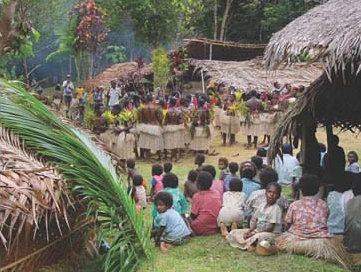
-
Evolution and Culture
12-16 Novembre 1999Liste des participantsChristopher BOEHM, Santa Fe, New Mexico
Robert BOYD, Department of Anthropology , University of California, Los Angeles, USA
Claude COMBES, Centre de Biologie et Ecologie Tropicale et Méditerranéenne, Université de Perpignan-CNRS Perpignan France
Sara CORDES, Rutgers University, USA
Daniel DENNETT, Center for Cognitive Sudies, Tufts University, USA
R.I.M DUNBAR, Evolutionary Psychology Research Group, School of Biological Sciences, University of Liverpool, UK
Robert A.FOLEY, Leverhulme Center for Human Evolutionary Studies, University of Cambridge, UK
Randy GALLISTEL, Rutgers University, USA
Rochel GELMAN, Rutgers University, USA
Marc D. HAUSER, Department of Psychology and Program in Neurosciences, Harvard University, USA
Pierre JAISSON, Laboratoire d’Ethologie Expérimentale et Comparée, Université Paris CNRS, Villetaneuse, France
Stephen C.LEVINSON, Max Planck Institute for Psycholinguistics, The Netherlands
David PREMACK, Department of Psychology, University of Pennsylvania, USA
Peter RICHERSON, Department of Environmental Science and Policy, University of California, Davis, USA
Wolf SINGER, Max Planck Institute for Brain Research, Frankfurt/ Main, Germany
Dan SPERBER, CNRS-EHESS, Institut Jean Nicod, Paris, France
Michael TOMASELLO, Max Planck Institute for Evolutionary Anthropology, GermanyThèmeOuvrage
Evolution and Culture, Edited by Stephen C. LEVINSON and Pierre JAISSONOverview
Biological and cultural processes have evolved together, in a symbiotic spiral; they are now indissolubly linked, with human survival unlikely without such culturally produced aids as clothing, cooked food, and tools. The twelve original essays collected in this volume take an evolutionary perspective on human culture, examining the emergence of culture in evolution and the underlying role of brain and cognition. The essay authors, all internationally prominent researchers in their fields, draw on the cognitive sciences—including linguistics, developmental psychology, and cognition—to develop conceptual and methodological tools for understanding the interaction of culture and genome. They go beyond the « how »—the questions of behavioral mechanisms—to address the « why »—the evolutionary origin of our psychological functioning. What was the « X-factor, » the magic ingredient of culture—the element that took humans out of the general run of mammals and other highly social organisms?
Several essays identify specific behavioral and functional factors that could account for human culture, including the capacity for « mind reading » that underlies social and cultural learning and the nature of morality and inhibitions, while others emphasize multiple partially independent factors—planning, technology, learning, and language. The X-factor, these essays suggest, is a set of cognitive adaptations for culture.
-

-
Casual understanding in cognition and culture
7 - 10 Janvier 1993Liste des participantsDaniel ANDLER, CREA-Ecole Polytechnique, Paris, France
Scott ATRAN (contributor), Department of Anthropology, University of Michigan, USA
Renée BAILLARGEON (contributor), Department of Psychology, University of Illinois at Urbana-Champaign, USA
Maurice BLOCH, Department of Anthropology, London School of Economics, UK
Pascal BOYER (contributor), Department of Anthropology, King’s College, Cambridge, UK
Francesca BRAY, Department of Anthropology, University of California, Los Angeles, USA
Susan CAREY (contributor), Department of Psychology, Massachusetts Institute of Technology, USA
Patricia W. CHENG (Contributor), Department of Psychology, University of California, Los Angeles, USA
Anthony DICKINSON (contributor), Department of Experimental Psychology, University of Cambridge, UK
Franck DORING, Groupe de Recherche sur la Cognition, CREA-Ecole Polytechnique, Paris, France
C.R. GALLISTEL, Department of Psychology,University of California at Los Angeles, USA
Rochel GELMAN (contributor), Department of Psychology,University of California, Los Angeles, USA
Vittorio GIROTTO, Italy
Ian HACKING (contributor), Department of Philosophy, University of Toronto, Victoria College, Canada
Denis J. HILTON (contributor), ESSEC, France
Robert A. HINDE, The Master’s Lodge, St John’s College, UK
Lawrence A. HIRSCHFELD (contributor), Department of Anthropology, University of Michigan, USA
Keith HOLYOAK, Department of Psychology, University of California, Los Angeles, USA
Michel IMBERT, Laboratoire de Neurosciences de la Vision, Université Pierre et Marie Curie, France
Pierre JACOB (contributor), CREA-Ecole Polytechnique, France
Pierre JAISON, Laboratoire d’Ethologie Expérimentale, Université Paris-Nord, France
Franck C.KEIL (contributor), Department of Psychology, Cornell University, USA
Marc KIRSCH, Sciences Cognitives, Université Paris XI, France
Max KISTLER, CREA-Ecole Polytechnique, France
Hans KUMMER (contributor), Ethologie und Wildforschung, Universität Zurich, Switzerland
Bruno LATOUR, Centre de Sociologie de l’Innovation, Ecole Nationale Supérieure des Mines, France
Alan M. LESLIE (contributor), Center for Cognitive Science, Rutgers University, USA
Gilbert LEWIS (contributor), Department of Anthropology, University of Cambridge, UK
Geoffrey Lloyd (contributor), Darwin College, UK
Jacques MEHLER, EHESS, Laboratoire des Sciences Cognitives et Psycholinguistiques, France
Michael W. MORRIS (contributor), Department of Organizational Behavior, Stanford University, USA
Richard NISBETT (contributor), Institute of Social Research, University of Michigan, USA
Ira NOVECK, Département de Psychologie, Université de Paris VIII, France
Philip PETTIT (contributor), Research School of Social Sciences, Australian National University, Australia
Guy POLITZER, Département de Psychologie, Université de Paris VIII, France
Ann James PREMACK (co-editor and contributor), Laboratoire de Psychologie de l’Enfant, CNRS, France
David PREMACK (co-editor and contributor), Laboratoire de Psychologie de l’Enfant, CNRS, France
Elizabeth S. SPELKE (contributor), Department of Psychology, Cornell University, USA
Dan SPERBER (co-editor and contributor), CREA-Ecole Polytechnique, France
Leonard TALMY, Department of Linguistics, University of New York, Buffalo, USA
Michael WALDMANN, Psychologisches Institut, Universität Tübingen, Germany
Amanda L. WOODWARD (contributor), Department of Psychology, Cornell University, USAThèmeOuvrage :
Causal Cognition: A Multidisciplinary Debate
Dan Sperber, David Premack, and Ann James PremackAbstract :
An understanding of cause-effect relationships is fundamental to the study of cognition. In this book,… specialists from comparative psychology, social psychology, developmental psychology, anthropology, and philosophy present the newest developments in the study of causal cognition and discuss their different perspectives. They reflect on the role and forms of causal knowledge, both in animal and human cognition, on the development of human causal cognition from infancy, and on the relationship between individual and cultural aspects of causal understanding.
-
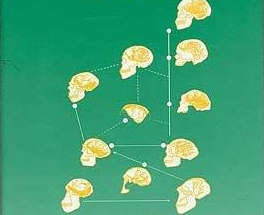
-
The Origins of the Human Brain: Paleontology, Molecular Biology and Developmental Genetics
14-17 Decembre 1990Liste des participantsRobert BOYD, University of California, USA
Rebecca L. CANN, University of Hawaii, Manoa, USA
Jean-Pierre CHANGEUX (co-editor), Laboratoire de Neurobiologie Moléculaire, Institut Pasteur, France
Jean CHAVAILLON (co-editor), Laboratoire de Recherche sur l’Afrique Orientale, UPR 311-CNRS, France
Yves COPPENS, Collège de France, Laboratoire d’Anthropologie Biologique, Musée de l’Homme, France
Henri DELPORTE, Le Perron, France
Robert A. HINDE, St John’s College, Cambridge, UK
Ralph L. HOLLOWAY, Columbia University, NY, USA
Bernardo A. HUBERMAN, Xerox Palo Alto Research Center, USA
Claudia KAPPEN, Mayo Clinic Scottsdale, USA
Janusz K. KOLOWSKI, Jagiellonski Uniwersytet, Poland
Jean-LOUIS MANDEL, Institut de Chimie Biologique, Faculté de Médecine, France
Steven PINKER, Massachusetts Institute of Technology, Cambridge, USA
David PREMACK, Laboratoire de Psycho-Biologie du Développement – CNRS- EPHE, France
Pasko RAKIC, Yale University School of Medicine , USA
André ROCH LECOURS, Université de Montréal, Canada
Peter J. RICHERSON, University of California, USA
Franck H. RUDDLE, Yale University, USA
Roger SABAN, Paris, France
Phillip V. TOBIAS, University of the Witwatersrand, South Africa
Bernard VANDERMEERSCH, Université de Bordeaux, France
Lawrence WEISKRANTZ, University of Oxford, UKThèmeOuvrage :
Origins of the Human Brain
Edited by Jean-Pierre Changeux and Jean ChavaillonThroughout history, humans have been fascinated by their origins. The evolutionary development of the human brain is of particular interest as our intellectual, emotional, and cultural capacities are considered to be unique among animals. This book brings together a group of eminent scientists from the fields of anthropology, psychology, neuroscience, and evolutionary biology. Their views have been captured to provide a starting point for a debate based on the most recent scientific data relating to the evolutionary origins of the human brain.
